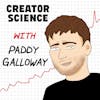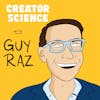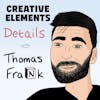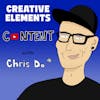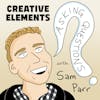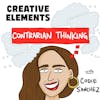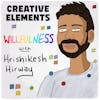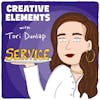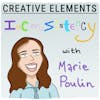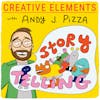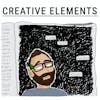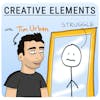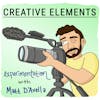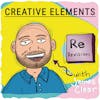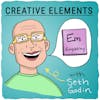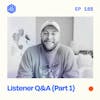
#185: Listener Q&A (Part 1) – The downside of viral videos, publishing less edited content, how we prepare our episodes, and working with sponsors.
Play EpisodeI’m joined by my producer Conor to answer your burning questions.
WATCH
▶️ Watch this episode on YouTube
***
EPISODE DESCRIPTION
In this audience Q&A video, my producer Conor and I answer all your questions about YouTube and building a creator business.
We talk about getting sponsors and how we craft our podcast intros
We discuss pivoting your content and more.
Listen to my recent Mailbag episode
Full transcript and show notes
***
CONNECT
📬 Subscribe to Creator Science
🙏 Make a guest or mailbag request
📝 Check out our curated Playlists
***
SPONSORS
💼 View all sponsors and offers
***
SAY THANKS
💜 Leave a review on Apple Podcasts
Learn more about your ad choices. Visit megaphone.fm/adchoices
Jay Clouse [00:00:00]:
Are viral videos the best way to grow your channel?
Conor Conaboy [00:00:02]:
How do you make videos that engage your audience?
Jay Clouse [00:00:04]:
In this video, my producer Connor and I answer all your questions about YouTube and building a creator business.
Conor Conaboy [00:00:10]:
We talk about getting sponsors and how we craft our podcast intros.
Jay Clouse [00:00:14]:
Pivoting your content and more.
Conor Conaboy [00:00:19]:
Home Rapid Repair asks, when growing your YouTube channel, would you rather have a viral hit and sensational content or the slow burners that create a loyal following, however long it takes you to build?
Jay Clouse [00:00:30]:
Well, first, I kinda want to call out something I disagree with with the premise of this question. I don't think having a viral hit and making sensational content is necessarily synonymous. I think you can have a viral hit without having it be sensational because I would say in general, I'm personally not interested in making sensational content, but that doesn't mean that we can't have some viral hits. Our video with Jenny Hoyos is at 2 and a half 1000000 views now, which is what, like 25 x, our next most popular video or like 20 x, our most Yeah. Next popular video. And from that video alone, last time I checked, we had picked up 30,000 subscribers of our now 77,000. So that is awesome that nearly half of our channel can be attributed to this one video, but there's also some challenges that come with that. In particular, if I'm somebody that watches Jenny Hoyo's video about shorts and I subscribe to the creator science channel, I'm likely expecting to get more videos that teach me about shorts.
Jay Clouse [00:01:37]:
And as a creator, you're kind of incentivized to lean into that. And and we see a lot of people do this where they have something that goes really well and they realize, oh, I get a really high response from this growing segment of my audience which may become the majority of your audience very quickly who want me to talk about this thing and this is what is called audience capture where you are literally almost dictated what you create in order to make your existing audience happy And that can be really challenging. Like, we see this in politics all the time. People that are creating political content on any platform, They realize the more sensational they go in one direction. It attracts the most polarized sensational people from that corner Mhmm. And they're incentivized to keep pandering to that corner, and it really puts you in a bind. So I'm I'm personally not interested in, doing sensational things and virality though nice comes with challenges But I am personally much more interested in creating a loyal following even if that takes a long time and actively fighting against audience capture.
Conor Conaboy [00:02:51]:
Well, we had that conversation too. After the Jenny video is, like, do we make more shorts content right away? Because, obviously, in long term, of course, we're gonna make another video on shorts. They're just kind of the nature of, like, educational content. But we made a decision after talking through it. Like, we don't want to be a shorts content channel. So it's like, we might take a hit in the next couple of videos because this new audience is super interested in shorts content, and we're okay with that because that's the decision we made with our channel. And I think the other thing is the 2 aren't necessarily mutually exclusive. In terms of, like, Doddford in in our interview with Doddford, Danny says, something along the lines of you only need 2 huge hits per year, to to to continue to grow your channel, which there's a lot of truth to that in terms of, like, one viral video isn't gonna set your channel up for success.
Conor Conaboy [00:03:48]:
You have to be consistent with it, and what you're looking for is a general trend of upward growth. Yeah. Maybe our views, this month aren't gonna be as high as they were the 2 months after the Jenny episode came out, but it's a general trend upward. And we're raising our base level of views, and that's kind of what you're looking for where you wanna take shots for views, but not every video is gonna be that massive hit, especially depending on your niche. If you're making educational content, that's just, like, the given.
Jay Clouse [00:04:21]:
Yeah. Not all attention is created equal. Attention does not mean affinity and attention does not mean trust. So I'm extremely entrepreneurial minded and I recognized a long time ago that you can only build a business if you have people who trust you and therefore want to buy from you. And so I'm not interested in just shallow attention for the sake of big numbers. My my path to building a lifestyle and a business is through affinity and trust. People who know, like, and trust you from your content. And so it's really easy to kind of trend jack and get in front of new people and get attention, quote unquote.
Jay Clouse [00:05:06]:
But if what you're creating doesn't actually build likability or trust with the people that it's reaching, to me, it, like, doesn't really serve a point. And in fact, it can actually play against you sometimes because followers who don't actually care about your content, if they're served your content and don't interact with it, it's kind of a weight bringing you down on any platform.
Conor Conaboy [00:05:29]:
And there's the personal side of that too, where it's like, if you don't like that content, then you're not gonna be able to sustain. Because if you're just taking shots for these big views and you're not actually enjoying the content, if it's not hitting the purpose, you wanna go out, that's not gonna be sustainable.
Jay Clouse [00:05:44]:
Totally. A lot of times, a good litmus test is, if this thing goes viral, would I be comfortable making a lot more of this for a long time?
Conor Conaboy [00:05:54]:
Mhmm.
Jay Clouse [00:05:54]:
And if your personal interest is, like, no, I don't wanna make more of this, then you shouldn't publish it probably because, like, a best case scenario is that it reaches people and they like it. But if that creates this albatross around your neck weighing you down from doing the things that you wanna do, that's not a good place to be as a creator.
Conor Conaboy [00:06:11]:
Neptune Design asks, when you do your intros, which I love by the way, how do you know what to include and exclude? Like, the problem I'm having is there's always a really good 82nd chunk of the convo I want to use for the intro, but it's too long. This question is related to podcast intros.
Jay Clouse [00:06:30]:
Well, I'll kick this one off, but a lot of a lot of this goes to Connor's design on the video channel. When this was just an audio podcast, and if you don't subscribe to the Creator Science Audio podcast, you should. When this is just an audio podcast, the way I thought about it was that I kind of a thought about the show in 3 acts, even though I didn't really even name it that in my mind. I actually think, Connor, you're the one that helped me think of the term act for those things. But I basically thought about the show in 3 parts. And what I wanted to do in the intro was give an arc of the whole conversation, a preview of the arc of the whole conversation. And so typically, I would pull a little bit of audio from, the first, second, and third 3rd of the episode to kind of paint a picture of what the episode will cover in the beginning. And honestly, it got to a point where I was hearing a psychologist talk about this and he didn't give a name to it.
Jay Clouse [00:07:24]:
But when you're a creative person, there's this feeling of things just kind of like clicking into a place. It's like putting 2 puzzle pieces together. When when you have like an aesthetic or a style or some sort of sensibility, you start to just sense when puzzle pieces click. And when I would edit the audio show I would come across something in the edit that would just have that click feeling of that's an engaging little bit of audio that I wanna pull into the intro and I would just cut it and move to the intro which I would deal with later And there are some very technical things like I realized something longer than 12 seconds usually is too much of one consecutive audio bit Or, this this one needs to end on a high note, and it kinda streams off. But, Connor, how do you think about that on the video channel?
Conor Conaboy [00:08:12]:
Pretty pretty similar. I'll get into some of the, like, technical details about what I'm actually doing. So the the first thing we should start out with is every one of our episodes has a very specific purpose. Like, there is something that we want our audience to take away from the guest coming on. So no matter what, that's gonna guide the entire episode from the prep, from the packaging, from a lot of times who we even have on, because a lot of times we we will have guests based around what they know versus who they are. So so look at everything I'm saying through that lens that every every quote, every, whatever I'm writing in the intro has to advance that point.
Jay Clouse [00:08:57]:
And let me double down on that real quick. What Connor is saying is we've basically decided on at least a rough idea of a package before we even reach out to the guest so that has guided the entire conversation that is prepped and recorded by the time we get into the edit to think about the intro.
Conor Conaboy [00:09:16]:
So with that being, said, when I'm going through and listening to the episode for the first time, I mark down every single quote that I think could even have the slightest chance of making it in the intro to make it easier for me. So there will be, like, anywhere from 10 to 25 or 30 quotes that are marked in my timeline that, obviously, most of them aren't gonna, you know, work out or I'm not gonna like later, but I have them there to be saved. And what I'm looking for when I'm doing these quotes is, did they say something that gives them credibility or results to back up whatever they're saying? Because in the intro, we're gonna have to sell them. Right? Because a lot of the times, we'll have guests on that you might not know because they're not massive creators or they work behind other creators. So we have to have some some sort of results, so I'll pull those out. Service level value gives, so anytime they can give some sort of information, but we don't want it to be too in-depth. We wanna save that for the later in the episode, and that's not a retention, oh, we're gonna hold it thing. It's a you don't wanna dive too deep in in the intro because that's not what people want.
Conor Conaboy [00:10:30]:
Like, in the intro, it's it's to bring you in and to kinda glaze over something, not to dive into a lesson right away. Kinda like a syllabus week type thing, where it's like, we're looking at the syllabus right now. We're not getting to the class just yet. We're just doing the overview. 3rd one would be cliffhangers or open loops. Are there sentences where the guest is listing something? Where you know, whether it's a believe or I can end it on a cliffhanger that opens a loop for the audience to be like, oh, that's interesting. I wanna hear more about that. Or, oh, what what is the end of what he's saying there? And then the last one would be contradiction.
Conor Conaboy [00:11:08]:
Like, for example, the doctor k intro.
Dr. K [00:11:12]:
There's a lot of common wisdom about content creation that I'm convinced is, like, pretty wrong. And and now I feel pretty confident about this because we've had 500 creators go through our program, and, like, the results are astronomical.
Conor Conaboy [00:11:23]:
So that's the hook quote, which you don't have to start out with a hook quote. I'll talk about that in a second. But there's a lot of common wisdom about content creation that I'm convinced is, like, pretty wrong. So right off the bat, if you're looking at this video from a new viewer standpoint, you clicked on the video that has the title, what is it, Harvard psychiatrist, meet the Harvard psychiatrist that's getting YouTubers millions of views. So if you click on this video, you hear that this dude is a Harvard psychiatrist, and he's saying that a lot of the common content creation wisdom that you probably know is wrong. Contradiction. So I'm gonna pull that, like, hands down. So that's an example of that.
Jay Clouse [00:12:04]:
Provocative. And and something something implicit that you're saying there is, like, when people click the video on the homepage or some recommended area, which is where the majority of our views come from, They have a belief about what that video is going to be, but they still probably need to be convinced that this is a video worth watching or that their belief was correct. So a lot of the intro is is backing up what we've set up with that package, the title, the thumbnail, the idea as a whole.
Conor Conaboy [00:12:33]:
Yep. Exactly. You have to reaffirm the click, because within, like, the first 30 seconds, the audience should know what the entire video is about. So that being said, so that's how I mark quotes down. So from there, I'll have, you know, anywhere from 10 to 30 quotes. Then I'll go through and list the flow and topics of the entire episode, everything that is talked about before it gets cut. Out of those topics, I decide what's gonna actually make the episode because usually around 25 to 40% of the interviews get cut down. The interviews are much longer than what you see on the channel.
Conor Conaboy [00:13:07]:
And then I look at what are what of these that make the episode what of which of these topics that make the episode are most interesting to the audience through the lens of the goal of this episode. Because a lot of times, there's topics that could be interesting in another episode, but they don't really fit this topic. Which of those topics have really good quotes that I marked out? So I'll have them marked down being like, okay. There's 7 of these topics that are really good, but only 3 of them have, like, really good, nice hard line quotes. That's what's gonna make the intro. Because that's really the important part is to get that brief overview of something that's going to hook the viewer. And if there aren't very many good hard quotes, because that depends a lot on the speaker and how they talk and how they deliver information, As an editor, I'll ask, can I make a good quote by piecing different things together? The ethics of this is obviously you never want to make the guest say something that, is different has a different intention than what they laid out. And, really, what you're only doing when you're editing their words is to help them get their point across better, than, like, in a normal episode.
Conor Conaboy [00:14:26]:
For example, in the Thomas Frank, in the last Thomas Frank episode we did, forget the title of that, The Hidden Opportunity in tutorial channels, I believe. The very first, line Thomas says is,
Jay Clouse [00:14:42]:
I wanted to create a destination that people immediately thought of as the go to place to learn Notion. I wanna make software tutorials so good looking that people are, like, why would he put this much effort into it? This is stupid.
Conor Conaboy [00:14:53]:
Those two sentences are from different parts of the interview. Like, there's, you know, whatever, a couple minutes in between them. But when I'm going through and looking at quotes, I saw that those go well together and they complement each other. So I'm gonna put those together in the intro even though they don't appear next to each other later on in the episode.
Jay Clouse [00:15:10]:
Yeah. There's this delicate balance with interviews where the intro really supports somebody's choice of tuning in for like a 30 to 60 minute thing. That's kind of what we're trying to do. We could talk about the conversation we have Patty Galloway, a few months back. But, really, what we're trying to do is get people to commit to what is a longer than typical YouTube video to watch. And the intro is there to reaffirm the click as Connor said, and also set up like why should you care what this person says my biggest pet peeve especially in audio is when the beginning of an interview starts and the host asked the guest to introduce themselves because you're gonna be either like super self conscious or they're humble, or maybe they go way too long and like here's everything I've done in my 20 year career Our job as host is to get to key that person up to to set them up to say this is why we brought them on the channel and why you should care to do that as quickly and as compelling as possible to encourage you to watch the rest of the video.
Conor Conaboy [00:16:18]:
So we have all of that. Now we choose which quotes we use. Right? So in our format, we we do 4 body quotes, and that's basically, the in this episode, you'll learn. And it's only 4 that was carried over from legacy of what we did in audio. We just kept doing 4. There's no real reason. It's like, you have to have 4. So I know I have to have 4 quotes that are gonna line up with the 4 topics that are most sellable and best quotes.
Conor Conaboy [00:16:49]:
Generally, we usually start with a hook, but you don't have to start with a hook quote. For that Thomas example, I felt the episode was more sellable if we set up and when I say more sellable, I mean, like, more hooky. That's generally the term I use because there's a lot of different ways you can say that. But it's it's easier to sell an idea that Thomas abandoned his 2,000,000 subscriber YouTube channel than with a quote about tutorial channels. That that just kind of paints the picture better and and brings the audience in better. So in that one, I started out with just Jay's VO, and I wrote,
Jay Clouse [00:17:27]:
2 years ago, Thomas Frank made the seemingly crazy decision to abandon his 2,000,000 subscriber YouTube channel that he spent a decade of his life building to make software tutorials.
Conor Conaboy [00:17:37]:
And then I backed that up with a quote. And that quote doesn't have to be as big of a hook because I already set up, the point that he abandoned his YouTube channel to do something else, which is why we're drawing people in, not the quote itself. If you do use a quote, there's a couple guidelines that I have. It has to be, like, what I call a sucker punch quote, meaning no buildup. It it has to it has to exist on its own with zero context. No buildup. No anything. It has to hit the guests or it has to hit the audience right away.
Conor Conaboy [00:18:16]:
And you want it to back up the packaging or the through line of the episode, like what Jay said, is to reaffirm the click. I think a very good example of this is our interview with Patty Galloway. There's 3 really, really good interviews that I've seen with Patty Galloway. 1 is on the editing podcast, 1 was on John Yushai's podcast, and then ours. It's all of the same guest, but within the first 30 seconds, you can tell how each one is different. So with ours, it's about we're talking to Patty about ideation. So what we start our quote or our episode out with is
Jay Clouse [00:18:56]:
I can't say it enough. Like, I'll be blue in the face saying this until I think the day I die. It's like the idea is more important than everything.
Conor Conaboy [00:19:03]:
First sentence, you know that this episode is going to be about ideas. If you go to John's channel, you see him talk about more of the spectacle of working with Mr. Beast in a more, like I don't know if well rounded is the right word, but a broader type of spectacle interview. And in the editing podcast interview, it's very clear that they're talking about editing. So that's, like, the importance of the hook is they ours reaffirms the reason why someone clicked on our video and what they're gonna learn. And what the editing podcast did and John did with their intros is the exact same thing, but geared toward what their episode is about. Mark Keeps God First asks, hey, Jay and Connor. I've experimented with a few different types of video styles, fully scripted videos with some editing and text on screen, bullet point scripts, and minimal cuts, and just raw videos of me talking directly to the camera.
Conor Conaboy [00:20:00]:
My audience seems to resonate with me the most when there are 0 edits involved. So my question is, is there now a niche for raw unedited content amongst the noise of overstimulating content? Is my unfair advantage my authenticity, or should I try to level up my content production? Because the better the production quality, the less authentic it seems? What are your thoughts, Jay?
Jay Clouse [00:20:23]:
This is a super common question right now. This is the the Sam Soulek question.
Conor Conaboy [00:20:26]:
And, Kevin from Epic Gardening too. He started, a channel like that and has seen some success.
Jay Clouse [00:20:33]:
Yeah. So my take on this, and Connor, I'm interested to hear your opinion, is I think what we see from channels that are doing this well or what, Mark might be experiencing is when you kind of go off the cuff. Usually it's coming from like an emotional place where you have something to say that you feel strongly about. And I think that is what's resonating with the audience, not just the format of it. I think it's the the fact that you have a strong opinion. You aren't doing this as, like, a performative thing. You're just sharing what you think. And I think that kind of content tends to do well.
Jay Clouse [00:21:14]:
But you could wrap that into higher production and it would still do well I think it's an emotional resonance question more than people sitting around saying I just wish videos had less editing.
Conor Conaboy [00:21:27]:
Yeah. And I I think there's intentionality behind it that people also kind of think, like, being authentic means you're not being intentional about what you're saying as if, like, you know, Kevin or Sam or any of those guys will sit down and just not have a plan before they talk at all, which could be the case. And if that is, then they could just be really good at speaking off the cuff and things like that. Not everybody's like that. So I think being intentional doesn't mean, amazing lights or amazing camera quality. I think a really cool example of this is what a lot of live streamers do, where it's like they might not have the best equipment because that's like the vibe they wanna give off. There's an example, OTK Productions is a content organization. They'll do a lot of IRL live streaming content, but they use really, really nice gear.
Conor Conaboy [00:22:19]:
But it doesn't. You wouldn't know that they're using, like, cinema cameras because you're not supposed to. It's supposed to get that feel, but they're still being intentional about how they do things. So it's like if you're outlining or doing anything like that, be intentional about it. You don't have to just sit down and speak whatever because a lot of times it's gonna be a little jumbled.
Jay Clouse [00:22:39]:
Yeah. If I sat down and just did something straight off the cuff with no prep at all, 9 times out of 10, it would probably be obvious that I did no prep Yep. And haven't thought about this before. And people wouldn't watch just because it's off the cuff. They would probably say, what am I even watching here? So a lot of people seeing the success of Sam Sulick or people like him need to be careful in assuming that the the format or the stripped down nature of it is what makes it successful. I think it's much more likely that it's the person, the personality, the emotion, the intentionality,
Conor Conaboy [00:23:18]:
you have you have 381 subscribers, 2 views over a 1,000 or 2 videos over a 1000 views. So it's like, clearly, you found something that resonated with some people, but it's also a very small dataset. Even when we were starting this channel, we had to be careful about what you're listening to in attributing reasons for that because it's such a small data size. And it's like your audience right now at 381 subscribers could look very different at 10,000 subscribers, at 50,000 subscribers as you kind of find out the broader interest of that person you're trying to connect with.
Jay Clouse [00:23:56]:
That being said, whatever size you're at, if you're getting some sort of signal that something might be working better than something else, play with it. Keep experimenting. Keep trying it, and you'll get more data, and you can continue to make decisions based on the amount of data you're getting in.
Conor Conaboy [00:24:11]:
Valentin Farkash asks, do you have any standard operating procedures or systems in place to enable the consistent output? In particular, I'd love to hear how you manage outreach to guests in the production flow from there to a finished episode.
Jay Clouse [00:24:25]:
100%, I do, and I don't know that I would survive without it. Yeah. And the the formats change a lot over time. So, like, in the beginning, when it was just me and it was just one platform, I was doing everything in, like, a Trello board. No one talks about Trello anymore since I got acquired, but Trello was like an early Kanban board. It looks a little bit like Asana. You can do something similar in Notion and Airtable. But I would just move things from, like, idea to pitched, in progress, done.
Jay Clouse [00:24:55]:
And I can manage things in that view. Things have gotten more complicated as we've published now on, we publish an email newsletter twice per month. We publish the podcast once per week. We we publish the YouTube channel, once or twice per month. And so there's just a lot of stuff in flight at any given time, and I really try to get ahead of the raw materials of publishing. So, like, on our channel, that's the recorded interviews themselves. So now all of this lives in Notion. Over the last couple of years, I've put a lot of time and work into making Notion work for me because Notion is like this beautiful sandbox and playground, but it's really up to you to make it work for you.
Jay Clouse [00:25:38]:
And so it's it's been a lot of iteration. Now it's in a place where I I collaborate with Connor in there. I collaborate with our audio engineer, my wife, my assistant. We've had other third parties that are in there for one reason or another. It's all inside of Notion in a content database.
Conor Conaboy [00:25:56]:
Man, it'd be so nice if that was a template that other people could download.
Jay Clouse [00:26:01]:
Yes. So that is what I've been working on for the last couple of months is taking my setup, which works, but was a little bit, like rough. Like, it was very utilitarian, but a little messy. So I cleaned that up. I pulled it all into like this very well packaged setup that now completely mirrors my setup and I've productized this. It's called Creator HQ. Mhmm. It is available for sale starting April 11th.
Conor Conaboy [00:26:30]:
April 11th.
Jay Clouse [00:26:31]:
Yeah. Depending on when you watch this video, the link will be in the comments to either join the presale or get it now. But this is literally our system at Creator Science. Yep. You can get that template, implement it. And what I really tried to do in this template was go over and above in terms of education and training on how to use it. Because, again, Notion is like a sandbox. You can make whatever you want out of it, but a lot of people buy Notion templates.
Jay Clouse [00:27:01]:
They don't know how to use it, and it just sits on the shelf. So this has tutorials built into it. It has little, tool tips and info blocks all over it so you can know exactly how this works.
Conor Conaboy [00:27:14]:
And I will say, I use I like using this one a lot more than our old one. Our old one kind of intimidated me. This one looks way better and is super clean.
Jay Clouse [00:27:23]:
Yeah. So if you wanna use what we use, including literally, like, the step by step preproduction of these videos and how we think about that, that's all built into the template too. But without Notion, I would not be able to manage all these things. And it helps me manage sponsorship. It helps me manage my tasks. It's where I keep all of my notes. I even have, like, a personal a personal dashboard. So we have, like, grocery lists and the stuff I've gotta prepare for my sister's wedding.
Jay Clouse [00:27:50]:
Like, all of this is in one place, and we've built it for you.
Conor Conaboy [00:27:54]:
And just to go through production flow, to get specific if this person was curious about that, Basically, from start to finish, we do the ideation, which the single biggest change we've made in the show since we started was moving so much emphasis to preproduction. So that's where a lot of it happens, where we're thinking about ideas, topics, matching those to people, and then, basically, that'll get sent out to Jay. We're like, okay. We wanna reach out to these people. Let's say this person that we reached out to says yes, then I go through and I'll do some initial prep from the packaging ideas of, like, for example, the John Yushai episode. We knew from the very beginning, we wanted that interview to be an expansion of one of his YouTube videos. So in the doc, I put in his YouTube video, said, these are interesting points. Let's see if he can expand on those, and then it goes from there.
Conor Conaboy [00:28:49]:
Jay does the interview. Then afterwards, it gets uploaded to Dropbox, where it gets an initial mix from our audio engineer. I start the edit after that mix. I write the intro script for Jay, then that gets sent off to Jay. While he is recording that, I do cut and graphics, And then after that, intro edit. Engineer get the final mix. I get revisions on graphics, final export, quality check, chapters, ad placements, and then we upload. And that's all tracked out through, the Notion and and Dropbox, I guess, is important in that too.
Jay Clouse [00:29:28]:
Yeah. And that's alongside all the things like sponsor communications that also happens in Notion. Say, this is related to this video or this newsletter issue, which I'm also writing in Notion. So it's all it's all it's all in there.
Conor Conaboy [00:29:41]:
Millennial Meg asks, I'm a brand new channel less than 3 months, but I have 2,000 watch hours and 300 subs because I've accidentally found success with decluttering videos. I want to keep decluttering, but I don't want to get stuck there. I want to be able to do more general, improve your life overall type content. Is it better to just focus on my small niche and improve there so I can count on the views, or is now the time to experiment and try everything I want but probably sacrifice views and growth for a while? What do you think?
Jay Clouse [00:30:13]:
I think this is I think there's some embedded limited beliefs in this question. The the idea that experimenting right now will come at a sacrifice of views and growth, I think is not true. I think that might be true at some level of scale but I think that's much more likely to be true when the channel is much larger and much more mature. I actually think it would be just as easy right now for you, Meg, to have a video about, some other general life improvement concept that does better than your decluttering videos and actually could double the channel overnight. I think that's very possible at the scale that you're at right now. So I think it's good that you're asking the question of what do I want this channel to be and being intentional about that. And I think this is a perfectly fine time to continue to make choices in terms of what videos you're making that are aligned with what you ultimately want the channel to be. What do you think, Connor?
Conor Conaboy [00:31:15]:
Yeah. I'm gonna lump there was another question from Farm Traveler, that's similar along the lines they asked, what are some tips when you want to dramatically pivot your content still serving the same purpose and subject matter, but with a very new and different format style. So very you you ask the same questions in different ways. And I think, like what Farm Traveler said is when you want to dramatically pivot your content is really important there because a lot of people will say, like, oh, I have to pivot this content. Like, what you're saying is, oh, I want to do this other stuff where it's like, okay. I did this one thing. Now I do this other thing, and I have to do it forever, which isn't the case with YouTube, especially with small channels. Like, you can work things in slowly.
Conor Conaboy [00:31:55]:
You can continue to change things. Like, this show is so much different than our first video we did, and that's because we, like, kept iterating on things, introducing new things, and there was never a moment where, like, oh, we did this, and now we do that. It's a growth from trying different things and iterating and figuring out what works. So I looked at, Meg's channel, and she's posting, I don't know, 2, 3 times a week. So you're talking 8 videos a month, do 6 normal videos in 2 experiments. Or, you know, it's things like that where you're breaking down what you're doing into content buckets. We're saying, okay. I know that this style, is working right now, and I think there's this other thing that my audience might like and just start trying to introduce that.
Conor Conaboy [00:32:44]:
And in our interview with John Yushai, he talks about, content buckets a lot, about marrying your niche and varying your format, which which is how he says it, to introduce new things and then iterate on it at least 5 times. Don't try the same thing 5 times in a row, but if you wanna introduce this other idea or new format, try it out. And if it felt good or if even if it didn't feel good, try to improve it the next time, and start to work those things in slowly rather than all at once because that's where people kind of mess up because that shocks an audience. What do you got? You have 452 subscribers. You have a couple videos, over 2,000 views, 1,000 views, which is really, really good. You've clearly found something. Just keep building on that. Like, you're still it's still a very, very small channel.
Conor Conaboy [00:33:37]:
You still have a ton of room to grow. Don't feel boxed in by what got you your first 100 or or a 1000 or tens of 1000 subscribers. Because at the end of the day, if you want your channel to be big, this is such a small drop of who your audience is and who's watching your videos right now.
Jay Clouse [00:33:55]:
Yeah. That's the point I wanna double click on is there is so many viewers and so much viewing attention out there that that what you have now is great. It's a signal of what you're building, but you could completely move in a different direction from here. Not saying to do that. I'm just saying there's so much potential still with the channel and what you're doing. A lot of people look at things as like this fork in the road left or right decision when they want to make changes. But it's it's more like a little diversion that you can test. And if it doesn't go well or if you don't like it or if other people don't like it, then you can course correct just a little bit and it's fine.
Jay Clouse [00:34:32]:
I love the I love the advice of if you're doing 8 videos a month, try 2 videos that are in a different format or a slightly different topic because that is such a low cost potential high reward test. And that's what you wanna look for. You wanna look for these a, asymmetric tests where the downside is low and the upside is high. And you have Yes. Lots of opportunity to do that.
Conor Conaboy [00:34:59]:
And hitting upon the second part of that question on, like, tips on how to do it, or, like, change formats or things like that, Really good example, I think we've talked about in, like, the episode with Jamie Roththorn, Patty, and maybe even Ed is looking at what did well in other niches, and then formatting it that way. So, like, you could use a tool like Jake Thomas's creator hooks where, I'm sure he won't mind me showing. I'll pull this up, where it shows you successful titles and thumbnails of other videos and stats about them and gives you formats. So you can start to see, okay, this format, this weird title in a golf niche is interesting, and that worked. How can I do this for decluttering? What does it look like to do a challenge video for decluttering? What does it look like to do an experiment for that decluttering or, whatever farm travelers content is? What does it look like to do contradictions in the in this niche and and sort of sort through those and start to introduce them? Because I think a lot of things that people go into would be like, oh, I do decluttering. That's the I can only talk about decluttering when it's like, that's not quite right. You can do all of these other formats and add action to it and add stakes to it or add story to it all around the same topic that still allows you to branch out and bring people in that especially, they get to see you, because I I think at the end of the day, that's kind of where you want your content to go. If you're saying you wanna introduce more improve your life overall stuff, which generally requires a connection with your audience, So introducing those different sides and seeing you more active and things like that could be really, really beneficial.
Conor Conaboy [00:36:40]:
Yes. Tanmay Bahavar asks sorry about the pronunciation. In a world saturated with content, how can creators ensure that their work stands out and reaches its intended audience aside from showing your personality?
Jay Clouse [00:36:55]:
Well, the first thing I would do is pull out my doctor k hat and say you can't ensure anything.
Conor Conaboy [00:37:02]:
Good call.
Jay Clouse [00:37:02]:
I think about that a lot now because I do I mean, at first, when I was having that conversation with him, I'm like, are you challenging the entire premise of my entire business? But I I I think it's good to keep in mind that you can't insure anything. All you can do is try to keep try to improve your odds and create the circumstances where, the outcome you want is more likely than not. So in terms of how can we make it more likely that our work stands out and reaches our intended audience? First of all, I like the second part of the question. How do how do we make sure it reaches our intended audience? It has to be useful or helpful or enjoyable to that intended audience. Everything that you create has to be speaking to that person and what you're saying. So that's like a litmus test you constantly do running. If you are your own audience, then you can kinda test it on yourself, but you can also look at this through the eyes of the feedback that you're getting. Is this resonating with people? This goes back to, like, the the signal of progress idea.
Jay Clouse [00:38:11]:
Am I getting some sign that this is resonating in the way that I was hoping with with the person I was hoping that it would?
Conor Conaboy [00:38:20]:
Yeah. And being, like, super clear and writing that goal down of, let's say, in YouTube standards being, like, for this video, when the viewers are done watching, this is the experience I want them to have had or this is the action I want them to take. And viewing the entirety of that piece of content through that lens, does it accomplish that?
Jay Clouse [00:38:42]:
One one thing I do in email, if you're writing a newsletter, that helps us a lot is when somebody signs up for my newsletter, the first email they get confirming their subscription says, what's going on in your world that led you to sign up for this list? And it's this really tight feedback loop because the answers to that question tell me if I'm reaching the right people or setting the right expectations. And there have been times when that has not been true. And so if I'm reaching the wrong person, then I need to look at how this person find it and why did they find it. Or if it's the right person, but they seem to be asking for something that I don't provide, why do they have the expectation that I could provide that? So having tight feedback loops in some way, maybe you see it in the comments that you're getting, or maybe you see it in the headline of the person who is commenting that they're the right person for you or the wrong person for you. You've gotta be calibrating and saying, am I getting in front of the right in front of the right people? Because if not, you gotta change the system. Whatever you're doing right now is getting the wrong results. So you need to change something to get the right results. Maybe it's where you're showing up.
Jay Clouse [00:39:43]:
Maybe it's the subject matter you're writing about. You need to make sure that right now, the people who are seeing your stuff, which it might not be as many as you want, but the people who are seeing it, are they the right people? And you gotta be intellectually honest with yourself. If it's not right, you've gotta change something about what you're doing to make that more likely to be true. Now standing out
Conor Conaboy [00:40:05]:
I think standing out is the hard part from from a YouTube perspective, I can't speak to, like, Twitter or LinkedIn or anything. It almost exclusively comes down to the idea and the packaging. And I think a really, really cool example of this, of how important it is, is this there's a French dance music group called Jersey, and they released an EP on YouTube with a video titled, we play music until someone breaks our synths. Now this is titled like you would think a normal challenge video, where it'd be like, okay. This is gonna be a storytelling video. It's literally just an EDM set. It's really good. It's a really good EDM set.
Conor Conaboy [00:40:51]:
If you like it, check it out. But all they did was make a good thumbnail, which they changed, by the way. There's 2 versions of the thumbnail, so they were clearly did this with performance in mind. And the other thing is just adding that little twist where it's like at the end of their when they're done playing their EP, one of their friends comes over and pushes their synth over. And it's like, all they did was play music, but it's this view, it it has now almost 480,000 views by far the most viewed video on their channel outside of just, like, normal or not even outside. They just post normal music beforehand, but it's like that's the power of it where it's it's just a music set. How did it stand out? They packaged it really, really well.
Jay Clouse [00:41:38]:
Yeah. The key the answer to this question is in the question itself. Like, if you think about the the idea of standing out, it means this is different. Yeah. So to ensure that your work stands out, you have to do something differently. And what I see a lot of creators fall in the trap of is they look at who is finding success. Let me mimic what they are doing, and that is by definition derivative of someone else's work. So you you can take that and twist it and and make it different in some way, and that's gonna give you the best shot because to stand out, you have to be different.
Jay Clouse [00:42:14]:
And Yeah. To be different requires creative risks. A lot of times the effort of standing out will have the outcome of nothing. Like, that's just Yeah. That's just the game. A lot of times, you try things that are different, and it doesn't work. It just misses. Mhmm.
Jay Clouse [00:42:32]:
So, you know, the the only way to ensure that you can stand out is to ensure that your work is genuinely different in some way and recognize that there are, risks and downsides doing that, but you have to be okay
Conor Conaboy [00:42:46]:
with it. And I I think the undervalued or or often overlooked aspect of this is, like, you can get better at this from research of doing things like this where it's like, oh, I'm looking for outlier videos, and it's like, oh, this is an interesting idea of let's take the Jersey music example of, like, okay. This is interesting. What if in my gardening content, I introduced something like that? I don't know what it would look like, like, grow whatever until blank, but it's like it's a similar concept applied to a different niche that you can put your own spin on. Now you have a unique idea that you can package well. You've seen it worked and go through things like, again, Jake Thomas's creator, Creator Hooks Pro, where you see other outlier videos that worked and analyzing being like, okay, this is really, really interesting. Could I take something about this, whether it's a title format or a thumbnail format, and kind of create this new experience from this interesting thing. Dennis Gielan asks, what's your top strategy for creating YouTube videos that drive engagement? What do you think?
Jay Clouse [00:43:56]:
It's an interesting question. I don't even think about engagement on YouTube the way I think about engagement everywhere else. What's always been, like, so awesome about YouTube as a platform is there is this built in culture of commenting that's stronger than like any other platform. It's it's crazy just how many people spend time commenting on YouTube videos. So that feels good. If you're talking about engagement in terms of I keep watching the videos, then I think it's it's like momentum, or you'd probably call it pacing. George Blackman talks about signposting in our video together. You you kinda have to think about the video as this journey that has a distinct beginning, middle, and end that people feel like they're progressing towards so so they keep paying attention, which becomes more challenging in, like, long form interviews than your typical YouTube video.
Jay Clouse [00:44:55]:
But I I really do think that you need structure that the person watching has a sense of what are we working towards in any given moment. They feel satisfied that they're progressing towards it. Sounds very theoretical. How would you say that?
Conor Conaboy [00:45:12]:
Yeah. No. I I I completely agree, and I think some of it comes down to, like, overarching relatability or, like, topic choosing. Because it's like, you can do all of those things, but if it's a topic your audience really doesn't care about, then it's not gonna be engaging. So I think on, like, a mechanical level, that would be things like doing research about what does your audience actually care about. Like, what are those specific questions? What do they need to hear? What do they want to hear? And how can you relate that information in a way that resonates with them that, like, sounds like it's coming from someone, that they would trust. Because it's like at at the end of the day, we can be technical about editing or anything like that, but it it comes down to the idea and how you're relating that to the audience, which is mostly done by research and engaging with your audience yourself.
Jay Clouse [00:46:05]:
I even struggle with the the phrase your audience, quote unquote, on YouTube because you you kind of have to think about, like, your target audience, your audience avatar because subscribers aren't what you think they are if you're new to YouTube. Subscribers are people who have watched a video and have said, I would be happy considering more videos from this person. And Yeah. Really even as our subscriber base has grown, the majority of our views video to video are non subscribers. So you have to think about what am I making for my intended audience? What are their problems? Not just what are my subscribers want. And so the reason I bring that up is most of your video viewers have not found your channel yet is what I would say. They don't actually know who you are yet. So if you're going to attract them, your face on a thumbnail probably isn't gonna be the thing that attracts them.
Jay Clouse [00:47:03]:
It's probably going to be like a specific idea that's related to a problem they're facing that they didn't even know you exist or you talk about yet, or some interest they have.
Conor Conaboy [00:47:14]:
Yeah. And even in terms of how you're getting in front of them, I can speak from my user experience as someone who's, like, been a YouTube user for, I don't know, 15 years. And from our channel stats, even people who are subscribed are mostly watching from browse features of, like, the home page and getting suggested. So it's not even like when when you're talking about your audience, it's not people that are, like, using your sub box or using their sub box or community tab. Because it's more like, if I sub, it's more of a signal to the algorithm, like, hey. Show me their next video on my home page. So it's like, I don't use my subscriptions tab anymore, which is considerably different than how I used YouTube 5 or 6 years ago. That's just how good their algorithm's gotten.
Jay Clouse [00:47:55]:
Last thing I'll say, Dennis, is just structure structure structure, like prep Yep. And planning and really thinking about what is a journey I'm taking somebody on because since the viewer probably doesn't know you yet, they're not going to have a lot of patience for you. Yes. You have to really earn their trust every second of the way in the video.
Conor Conaboy [00:48:18]:
Baldly Rudy asks, I'm an up and coming tech content creator and have a lot of inbound emails. Some of it is from no name brands and others are legitimate offers, but I'm getting overwhelmed with keeping the momentum of the channel and dealing with brands for deals. When is a good indication for a growing depending on who you ask, never. We're just with Justin Moore.
Jay Clouse [00:48:48]:
I was gonna say that too. But we've worked with we've also worked with people who do a good job of representation, so it's it's hard. It's really a case by case. And I've worked with representation on the audio show in my newsletter, so I've done both sides of things. And there are clear costs of overhead of managing this yourself as you're experiencing right now, it sounds like, Rudy, with just managing this, the the thoughts on your mind of, oh, I've got to respond to them or how am I gonna do this? That's taking away from creative energy. There's no denial of that here. What I've come to realize is it's better to take twice as much time to deal with partners who will do 2 times as large of campaigns then try to work with more people at a smaller scale because there's just there's a certain level of overhead that happens with every partnership no matter the size, and the efficiencies come from doing fewer campaigns. And also something that I'm thinking about a lot right now is just alignment and even what a soft endorsement of a partnership is.
Jay Clouse [00:50:07]:
Integrity and making sure that you're aligned with the sponsor, I think is like the most long term important thing you can do with these partnerships. And so if you're getting brand deals in that feel illegitimate or like it might not be worth your time or you don't feel totally aligned with, I'll just trust your gut and pass on it and not think about it again. Yeah. I think that's kind of the skill is learning how quickly can I rule certain things out and just be at peace with not thinking about that ever again and really try to attract and only work with the absolute best possible sponsors and give them a great experience? This is the other thing that I realized when I was working with representation was sometimes I was not in control of the partner experience and that partner might not be having a great rep experience with that representation or might not feel as cared for or looked after. So, you know, even if you do wanna go down the representation route, you've got to do your own work of vetting that person and making sure that the processes make sense. So, you know, ask yourself. Do you want to build the capabilities of managing partnerships in house? That might be you in the immediate term. It might be a contractor.
Jay Clouse [00:51:24]:
It might be someone on commission. Or do you want to outsource this? If you wanna outsource it, outsource it quickly. If you wanna do it in house, build some processes to make this better. And we have a related question from Jay Acunzo about this also that we'll we'll talk about here in a second.
Conor Conaboy [00:51:40]:
Jay's question is, if you were starting from scratch with sponsorships, what would you do differently or what would you set up so it runs smoother?
Jay Clouse [00:51:50]:
So the nice thing about having representation to Baldy's question Baldy's rudy's question the nice thing about having a representation to rudy's question is that it saves you all that time overhead but it usually comes at the expense of like 20 to 40% of the revenue which is significant as you grow So to Jay's question, I am starting from scratch with sponsorships. And what I'm doing differently is realizing it's an experience that I wanna bring in house. And instead of having what I used to think of as just like inventory and these different platforms. You know, we have one integration per YouTube video, and we have this many mid roles and this many pre roles and the podcast, and we have this many presenting sponsors in the newsletter. I used to look at every discreet possible ad unit as inventory and I felt pain if I didn't fill that with some sort of sponsor. And so even at times in the past, I've, like, discounted rates to make sure that I'm getting something for that ad unit. What I'm realizing now is, again, it's better to work with fewer partners that are super well aligned, that you trust, you believe in, and also, maybe bigger campaigns. You know, I I'm letting newsletters fly now without ads because I'm realizing, heck, I can use my own ad space and get the same financial benefit a lot of the time.
Jay Clouse [00:53:14]:
So if I don't fill that space, I'm not gonna stress over it. I would rather continue to focus on just the best partners possible and have less administrative overhead and conversations because every sponsorship, conversation I have usually starts with an inbound email. If I'm not pitching, they'll send an inbound email, say I'm interested. They gave me a little bit of data. We schedule a call. We work through a set of questions I have to learn their, campaign goals, the best partnerships they've had in the past, their budget, what their product priorities are right now. Then I take that information and make a custom proposal with 3 different packages at 3 different levels of investment. I send them that proposal.
Jay Clouse [00:53:59]:
They look at it. Sometimes we negotiate, sometimes we don't. Then I have to choose dates and integrations. I have to get creative guidelines for from them, like a creative brief. Then I put that brief into actual yeah creative whether it's audio video or written then it flies, then I report on it. So you can see all these steps. There's a there's a lot here. It's better to work with fewer sponsors so you just spend less time doing that.
Jay Clouse [00:54:31]:
And I've basically made that whole process step by step in Notion so that I keep track of it without thinking about it, and I can view multiple campaigns in flight. And I
Conor Conaboy [00:54:43]:
think the the biggest thing I don't handle much of the ads, but, like, listening to Justin Moore talk so much who if you haven't watched those episodes, we've done 2 episodes with him on sponsorships. You should definitely check them out. But the reframing of thinking about brand deals as, from transactions to relationships. Because I I it sounds stupid, but that made a switch flip in my head where it's sort of, like, thinking about isn't as high turnover in, like, employment, where it's like you'd you'd better extend that relationship because that turnover and finding a new brand deal, in this case, is expensive, and, like, you have to onboard them. You have to do all of these different things. So you want to prioritize long term relationships, not approach this as a a singular transaction or even like an us versus them type situation, which is super common because, typically, it's like, oh, brands are the bad guys, creators are the good guys, and it doesn't necessarily have to be that way.
Jay Clouse [00:55:46]:
Yeah. It shouldn't be that way. I mean, typically, what we what we are tempted to do is try to get the highest dollar amount possible as quickly as possible, and we don't think about the ROI for the brand right off the bat but Mhmm. All of that upfront communication that you have with a sponsor is kind of a one time cost if you then deliver a good campaign. Yeah. Because after that, you can kinda just, like, propose things, sign, and move with it. We've worked with Youscreen for a long time here on the channel, and we've used the same ad creative for several videos. There's even efficiency in longer campaigns of you can reuse the creative.
Jay Clouse [00:56:23]:
If you're doing single video integrations with new sponsors every time, not only you having the entire process front to back with all those new sponsors, but now you're producing an asset that you're only using once. So it it is sometimes better to air on the side of I want to have a great first campaign with these sponsors so that they renew rather than let me get the most I can charge possible from every integration and risk burning that relationship or not having the opportunity for a renewal.
Conor Conaboy [00:56:56]:
Griddle with Johnny asks, at which point do you recommend trying to get sponsors for a newsletter? I'm at 6 k. How do you get them?
Jay Clouse [00:57:06]:
Check out Griddle Lajani's YouTube channel if you want to work with a Griddle. Super fun videos. Grateful that he's in our membership community the lab but I I like this question because people tend to think there is like this theoretical threshold of how big some platform needs to be before you can get sponsors. Before I was doing anything creator science related, I had this little podcast called Upside that had a much smaller audience, much smaller listenership. And for the first couple of years of creator science existence, upside was still generating as much or more sponsorship revenue because we realized everything in terms of revenue earned from sponsorship depends on who the sponsor is and how much a new customer or lead is worth to them. On creator science, I was sometimes having sponsors of, like, there's a a shirt brand called, oh I forget the name of it now we we had t shirts on the show at one point and those were like $20 per unit But on upside, we had professional service companies advertising with us. So it was like lawyers, accountants, bankers, executive recruiters. So if they got one conversion, that was well worth the entire sponsorship campaign to them.
Jay Clouse [00:58:28]:
Meanwhile, I've got a sling like dozens of t shirts over here to make that worthwhile. So if you have a smaller newsletter, you can sell sponsors today. If you can identify who has a high value for the type of people who are in my audience. And a lot of times, it is like professional services or higher priced products where the ROI is higher per customer. The the lifetime value is higher per customer. And you can approach them because a lot of times those people don't have the same opportunities to sponsor Media companies either. They don't have a lot of people saying like hey team of lawyers, do you wanna sponsor my podcast? Like, no one's doing that outreach. So you can reach out to anybody at any time and propose sponsoring any of your platforms.
Jay Clouse [00:59:13]:
Just start a conversation. The win is the conversation, you know, reach out and say, hey, my name is Johnny. I have a channel of 93,000 subscribers who really care about griddles and making great food outdoors. I use a Blackstone griddle and I thought it would be a really great opportunity for us to partner to get you in front of all those viewers Would you be open to a conversation You know, start with that. You don't pitch and say, here's my channel. Will you give me 5 grand to be a sponsor? Have a conversation first. Build a relationship as we're just saying. Start with the relationship first.
Conor Conaboy [00:59:48]:
And if you wanna go deeper into, like, the process of specifics of how do you contact people or things like that, the 2 episodes we did with Justin Moore are really good. He walks through his entire process start to finish from pitch to posting. So those will help a lot. Billy Simoa Celebi. I'm sorry if I mispronounced that.
Jay Clouse [01:00:09]:
We'll call you Billy.
Conor Conaboy [01:00:11]:
Billy asks, what are some effective strategies for creators to stay motivated and inspired amidst challenges and setbacks? And then we'll add to this a similar question from Andrew Kaplan. How do you manage the emotional highs and lows that come with running your own business in public? What do you think, Jay? You've been doing this for a lot longer than I have.
Jay Clouse [01:00:32]:
Well, I can tell you the the the beginning of my even entrepreneurial journey to Andrew's question of the highs and lows, I was so ill equipped to deal with the lows that I basically, like, removed emotion from my life for a period of years in the beginning. Yeah. And that's not the answer. That's what I've come to know. Yeah. You you can't you can't rule out the lows without also, like, really numbing the highs. And it just it it makes things not worth it if you're not feeling any emotion. So, you know, the the the thing what is, like, vanilla sky where it's, like, the sweet is not a sweet without the sour.
Jay Clouse [01:01:14]:
Yeah. It's true. Like, you can't have joy without also having despair. There are two sides of the same coin. So how do you stay motivated? How do you manage those things? The older I get, the more I realize how important it is to just like pay attention to how I'm feeling because in content, so much of creating content is a transfer of emotion. So if you're feeling emotionally low, any content you create from that place is going to transfer that emotion. And maybe that's a good thing because you're trying to connect with other people and show what it feels like to feel emotionally low. In my case, a lot of times, I'm trying to inspire people, encourage people, and I don't wanna be creating from that emotional low place.
Jay Clouse [01:01:58]:
But if I get so in my head about discipline and publishing and I make something anyway, it's it's just not quite going to work. So a lot of times I'm listening to myself and managing my creative times with how I'm feeling and I'm a sensitive boy. So in terms of staying motivated, what I really like to do is identify signals of progress, and you get better and better at picking out fainter and fainter signals of progress. You think that, like, the signal product progress you're looking for is 20 people commenting on your post and saying, I love this. This is the best thing I've ever seen. And sometimes that happens, but it's it's more of the exception rather than the rule. Really, what you're looking for is like tiny little moments that point to you being on the right track. Maybe it's this video has a higher upvote percentage than others.
Jay Clouse [01:02:53]:
Maybe it's the average view duration on this video is longer than others or the click through rate. Maybe it's I got one reply to my email newsletter that said this is my favorite newsletter that I read. Anytime you see some signal that what you're trying to achieve is happening in a small way, you can usually extrapolate that beyond the one person that says it and say this person represents a quieter majority that is like them. And I like to say on Twitter that I'm, like, celebrating every milestone on the way up. That's partially me dealing with the negative emotions that also come with the journey. Yeah. If you if you lean too much into the negative emotions, but don't enjoy the positive ones, then everything feels negative. It's it's it's on our biology actually to really focus and over emphasize the negative things.
Jay Clouse [01:03:41]:
So you have to retrain yourself to actively identify and then take a moment to appreciate the positives and and find it's kind of a fun game. Find the smallest signal of progress that you can on a day to day basis and take some time to enjoy that.
Conor Conaboy [01:03:57]:
Yeah. And I think for me, doing things in public has made me focus way more on following a north star of, like, where I want to be trying to separate myself from results and through like, especially on YouTube, statistics, because goalposts move so fast. Like, as soon as you get that million view video, like, when we had Jenny's, it's like, well, why why aren't we doing that every video? When it's like when we first started the channel, if you would have said, hey, we have a 2,500,000 view video, I would have been like, shut the fuck up. Like, no shot. Like like, they it's just but now, you know, if a video gets 10,000 views, you're like, oh, come on. It could've done better. But when you think about, like, well, you know, why why do I feel this way? And it's important to zoom out and being like, okay. My north star for this year is personal development.
Conor Conaboy [01:04:49]:
So it's like, if something didn't do well performatively, well, did that still move me in the direction that I wanted to go? Like, am I still getting better at what I'm doing? Am I still becoming a better person or anything like that? And then zooming out and, like, what you said is hitting upon those little things of progress and thinking, like, what would what would Connor 6 months ago have wanted? You know what I mean? Like, is this a problem that he would have dreamed for? You know, like, 3, like, 3 years ago or whatever. Is this what I wanted? Usually, yeah. Like, this stress or, like, this is exactly what I asked for. So why do I feel so bad about it right now? And it's just zooming out and and putting yourself in that headspace.
Jay Clouse [01:05:32]:
It's also important to be choosing work that you care about the, the product itself. Because if you're if you're doing things because you think people will like it, when they don't like it, not only do you feel like you failed that goal, but then you also don't have a thing that you like. So you need to be choosing products and creating content that you like and you're proud of and you would want to talk about in the future regardless of how well it went. We have this video with Angus Parker on the channel that I think is super good, super tactical, super helpful to people who are trying to hire. Not one of our highest performing videos by any means, but I still find video value in having that as part of our body of work, and it's something that I can refer to people, and I know it will help people. So even if that, quote, unquote, underperforms our typical viewership, there is value there. I've I've again, this is like the asymmetric thing of I've capped my downside and given myself potential for high upside. That's what I'm always trying to do.
Conor Conaboy [01:06:33]:
And, like, 2 more tactics, like, just little one that I learned from the doctor k episode, which is great if you wanna learn about mental health type stuff, especially as it applies to creators, is being intentional about how I look at things in data. Because a lot of times with social media, we just consume everything all at once, and we're not mentally prepared to do that. So I've been super intentional about when I look at stats, when I'm receiving feedback, things like that. And the other thing is therapy. Like, you know, like, get go to therapy. Even if you don't need it, or if you don't think you need it. I think it's great. And if you are one of those people who don't, have the financial means, do so.
Conor Conaboy [01:07:13]:
Usually, if you live in a college town, they have programs, that you can do therapy with grad students that has oversight, or there are websites like, Rise Above the Disorder or programs for queer people or anything like that where you will get discounted or free therapy. So there's usually options if you can't financially, afford it. Mitch Wilder asks, what is the method you've used to attract so many great people to do interviews with you on your YouTube channel? And how do you get them to open up so much about their methods?
Jay Clouse [01:07:46]:
These are good questions, and not a lot of people ask specifically the second question, which I think is really, really good. Yes. So in terms of getting people on the show, this really goes back to the start of the audio show in March of 2020. There there had been and probably still is advice floating around that's like, if you want to build an interview show and you want big guests, you gotta start with, like, b level players and you can work up to a level players. And I think that is total self limiting garbage. Because what what I have found is anybody you invite on the show likely will check into is this person legit? And they'll look at your background and they'll look at other people who have said yes to the question you are asking them right now. And they'll use that as like this litmus test of do people like me go on shows like this. So the sooner you have the caliber of people you want on the show, the better.
Jay Clouse [01:08:46]:
It obviously is a little bit of a catch 22. But if you do enough outreach or you have somebody with some connection that can make an intro and you can ask for a favor, the better off you are. The first episode of our audio show was Seth Godin. The second episode of James was James Clear. I had had a couple email exchanges with Seth, so that was something I pulled on. And James Clear lives in Columbus. He's a friend of mine. So I pulled in those two favors.
Jay Clouse [01:09:10]:
Suddenly, when I asked someone to come on the podcast, I can say I've interviewed Seth Godin and James Clear. And that makes it a much easier yes for people who know those people and think, well, they wouldn't say yes if there wasn't some value in it. So that's the the answer of how do you get people on the show is I've had other people on the show, and I make very direct asks with a very short email template. I can actually
Conor Conaboy [01:09:35]:
If I'm not mistaken, the Seth Godin and James Clear interviews, they are the first you posted, but those weren't the first you recorded. Right?
Jay Clouse [01:09:43]:
Correct.
Conor Conaboy [01:09:43]:
You had a bunch set up. Yeah.
Jay Clouse [01:09:45]:
Correct. And that's important too because the first few interviews you do, if you're doing an interview show, are not going to be good. Yeah. And you're gonna screw things up that you can't even predict. So it's better to have a couple of, like, practice interviews that you are comfortable with maybe not even publishing before you do these interviews. And and like Connor just said, the the order in which you interview somebody does not dictate the order in which you publish the episode. Yeah. A ton of people still go back to episode 12 of the podcast.
Jay Clouse [01:10:19]:
So I'm glad those 2 episodes have guests that people recognize and are interested to hear from. So for the email pitches that I send to people, it all they're all the same. I say, hi, name, and then I have a sentence or 2 that are highly personalized to their work, how I know it, how I care about it, and it's very clear that I admire their work, and this is not a templated email. It's something very specific about the details they have, something thoughtful about something that they've posted to just make it clear that this is a personalized pitch because people want to feel special. If if I I I get a ton of pitches myself. If I get a pitch where it's like you clearly just wrote the same thing to me that you did to somebody else, It makes me feel like you don't necessarily want me. You want somebody. So you have to personalize the first couple of lines to make it feel like them, but you also can't share your whole life story here.
Jay Clouse [01:11:15]:
That would be too long. So then after I make that relatability pitch or connection, I put in bold, would you be up for a 45 minute remote interview for the show? Usually in that first paragraph, I'll say, like, I would love to have you on creative elements or, sorry, creator science to tell your story. Then I say the pitch, I give the description. Creator Science helps people succeed as a professional creator. I'm talking to professional creators like you who have figured out how to make that work. Past guests include James Clear, Tim Urban, Tory Dunlap, Cody Sanchez, and more. So it's like social proof, social proof, social proof. People you've heard of have done this show.
Jay Clouse [01:11:52]:
It's a high production narrative interview show on, this network. When I was on the network, it has 2,000,000 downloads. It won a single award and was featured in Apple Podcasts, Castbox, Stitcher, and Pocket Cast. Again, social proof. Worth your time. Then, and this is really important. I say if you're up for it, you can schedule directly here. I give them the link to schedule.
Jay Clouse [01:12:11]:
I don't wanna create a back and forth exchange. If I've sold them on the idea of coming on, I want them to be able to take action, schedule time right there. I end it by saying no rush. I'm totally on your schedule. Happy to answer any questions or find better time better times that work for you. Zero pressure or expectation. Thanks for the consideration. What I find a lot of people do to screw up guest asks is they'll make a great pitch and then they'll say, do you have time the next week or 2? Absolutely not.
Jay Clouse [01:12:39]:
Nobody has time the next week or 2. I'm protecting any time I have in the next week or 2 with my entire life. No. But if you say, do you have time in the next couple of months? Then it feels like, well, of course, I have time in the next couple of months for 45 minutes, for sure. In the subject line, I actually put in brackets interview requests and then say, can we talk about your creative career? Because I think when people see that, they're like, oh, I wanna someone wants to interview me? Cool.
Conor Conaboy [01:13:03]:
Yeah. It
Jay Clouse [01:13:04]:
it works. I swear people open that subject line. So that's the, that's the pitch of how I get people on the show. And if it's not email, it could be a direct message.
Conor Conaboy [01:13:13]:
And the, like, through line of that, which is similar to any pitch, is just making it as easy as possible and low lift to say yes.
Jay Clouse [01:13:20]:
Yes. They don't have to
Conor Conaboy [01:13:21]:
do anything. All they have to do is click this link and then schedule a month or 2 in advance that, you know, they might not think about again until the week before or something like that.
Jay Clouse [01:13:32]:
And I don't ask for their bio. I don't ask for their headshot. Like, your input is just scheduling a convenient time and showing up. That's I want to be as low friction as possible, and I wanna give you an out for saying no without feeling like a bad guy. Now to Mitch's second point of his question, how do you get to how do you get them to open up so much about their methods? You know, I would say 2 things. 1 is, I think tone and inflection and how you speak to somebody is the key to how that conversation goes. You can ask pretty direct, almost personal questions with a tone or with inflection that invites a response or invites, like, defensiveness. So if if I ask somebody, like, so how much money do you make every year? Yikes.
Jay Clouse [01:14:26]:
Feels bad. Feels Yeah. Like you're interrogating me. But if I say something like man so you've been growing at 100% year over year what does that look like like in terms of revenue Much more inviting to respond to. Yeah. There are other, like, specific techniques. Sam Parr talks about some of these where, like, if you're trying to get a number, you can throw out an absurd number first. Like, if you're asking them about revenue, you could be like, so you're generating, like, $10,000,000 of revenue every year.
Jay Clouse [01:14:56]:
If it feels absurd, or if people are just, like, really proud of it, they'll typically give you the real number. I don't I'm not I'm not big on getting people to say things that I think they might regret sharing publicly.
Conor Conaboy [01:15:10]:
Sure.
Jay Clouse [01:15:10]:
But it's it's it's really about tone and inflection and both of those things lead to what I would call assumed rapport. If you don't have a preexisting relationship with this person, there's still some amount of rapport that you can assume that you guys can have. You can go too far. You can go too far and make it feel like I don't know you. Are you acting like we're friends? But if you assume good intent and assume some level of openness, that typically leads to people feeling comfortable and opening up a little bit.
Conor Conaboy [01:15:42]:
And I think from the editing perspective, what I've noticed is not asking people to talk about themselves. You want to switch it onto either have them problem solve with you or talk about very specific situations or hypotheticals. Hypothetical. About themselves, no one really wants to talk about or I will say unless you're interviewing someone who's, like, super media trained, who is used to being, like, I'm Connor Conaboy. I do this. I've done this. I did that. Then you're gonna get a very scrambled answer where if you have an editor, it should be cut.
Conor Conaboy [01:16:17]:
A lot of people don't, but it should be cut because there's so much dead space and people don't really know. But if you ask somebody a very specific problem solving question that involves either a hypothetical or or a specific situation, then their brain flips to, like, oh, I'm I'm more active in this conversation. I'm not reflecting. I think that's the big difference is reflection versus being active in teaching or talking about something that your audience will be, or that will be valuable for your audience.
Jay Clouse [01:16:48]:
That's a good way to put it because a lot of times I do say things like, so let's imagine that I am this person in this situation trying to do this thing. What would you say to that person? Like, I I make it, less, it feels less invasive. It it, like, gives them the gift of projecting and feeling a little less attached to it, I guess, in a way, but it just feels easier to answer, I found.
Conor Conaboy [01:17:14]:
Well and they don't have to think about it that much because it could be, for example, where you'd be like, in this video, you said blank. Could we talk about that as it applies to this? Or or in this video, you talked about this concept. How does it apply to this situation? Where it's like that very active problem solving. You're not dancing around the bush where a lot of times, I've seen interviewers, they'll kind of, like, dance around a question expecting the, expecting the guest just to answer it for them and to, like, know what they're thinking, but you kind of guide the active conversation to get what you want to to get the exact information you want from that person in the interview. There's been literally times where in our prep documents, I will, like, write a note to Jay being like, hey. Try and get them to say this thing or to talk about, like, this specific situation. I want this quote. Especially with people who I know are good speakers, like, I did it with Justin Moore.
Conor Conaboy [01:18:13]:
I did it with John. Yusha, I did it with Patty where it's like, I know we can get them to say something that we can clip and and is a really good hook and is super valuable for the audience. Let's try and do that by talking about this situation that leads us into that.
Jay Clouse [01:18:27]:
Yes.
Conor Conaboy [01:18:28]:
Joe Kearns asks, common advice is start with 1 platform, but that seems hard with YouTube. Video could be my strongest content, but it seems more challenging and resource heavy to get initial traction. Do you start with YouTube anyway or just x slash LinkedIn and use that examples.
Jay Clouse [01:18:55]:
Yeah. And the second thing is nothing grows YouTube other than YouTube. So you're not going to get an audience on x in LinkedIn to care about YouTube later. I think the question of when does YouTube enter the fray is a question of how much conviction do you have that YouTube is a big priority for you. Because if you have high conviction, then you wanna do it sooner rather than later because it it is more resource intensive, but there's also a lot of I find there are more skills involved in doing YouTube well than any other platform, and you have to develop those skills. And you can only do that through practice. Like, I I I've been saying lately that theory is learned and, insight is earned. You can learn the theory of of YouTube, but if you really want to, like, earn the insight of how to do YouTube well, you've gotta get practice at doing it.
Jay Clouse [01:19:50]:
So if you have high conviction that YouTube is something you're going to do, start soon. And if you don't have any resources to allow you to do things outside of YouTube at the start, that's just fine because YouTube can build your entire business. Like, YouTube can be the engine for everything, even if that is all that you do. I've been blown away that lately, Connor, I've been getting a ton of followers on Instagram, legitimate people. I'm not even posting on Instagram. And when I asked them, they came from YouTube.
Conor Conaboy [01:20:21]:
YouTube is more likely to grow those other platforms than other platforms are to grow your YouTube.
Jay Clouse [01:20:27]:
100%.
Conor Conaboy [01:20:28]:
I think the other side to that, that I would caution you is looking at where should I create content from a performance standpoint and not, like, what am I good at? What do I wanna do? And that's the thing is where you could feel that YouTube could be your strongest content, but if you're a writer, it's probably not gonna be where you wanna start. It'd probably be LinkedIn, probably LinkedIn, maybe Twitter. And then the opposite where it's like, if you're a performer and video is your thing, then, yeah, just focus on YouTube and then figure out the other stuff later because it is so resource heavy. I think trying to split your time or evaluate something on where should I be is different than, like, what am I good at? What do I want to be good at? What do I want to make? That kind of thing.
Jay Clouse [01:21:15]:
Yeah. Those are important questions. If you if you have high conviction that you want to do YouTube, then dive in, start doing it, find a way. You probably you may not have the resources or connections to hire great talent to help you. You might be doing a lot of it on your own in the beginning, and you know what? You're gonna learn a lot doing that. But you're you're the the sooner you start the clock and start getting practice, the better off you are. And the great thing about YouTube is it's typically I would I would put it under the bucket of long form, quote, unquote, unless you're doing shorts. But I would put it under the bucket of long form.
Jay Clouse [01:21:44]:
And the great thing about long form content is there are lots of pieces of long form content that can then be, I wouldn't say repurposed directly, but used as inspiration for short form content. If there's if you're doing a YouTube video about 4 ways to, clean your carpet, each one of those 4 ways could be their own self contained post on LinkedIn or on x. Kiwi dad asks, I have a decent following, 80 k on Insta and
Conor Conaboy [01:22:14]:
30 k on TikTok, in the parenting niche. I've experimented with free books and got maybe a 100 downloads. I wanna create a course to support new parents, but I'm worried the time investment to do this won't pay off since my audience doesn't seem to leave socials much. Any advice?
Jay Clouse [01:22:32]:
Well, Kiwi dad, I can tell you that my first course, I made quietly without warning people that I was making it. I actually made 3 courses and spent 6 months doing it, put together this whole launch campaign and had 2 people buy. And it was a huge flop, and I felt like an idiot, and it was miserable and sad. I'm glad you're asking the question before you go and do all of that because there's a couple of very simple things that I would recommend doing that make this a lot easier. The first is I would just do a presale. Like instead of building the whole course, I would think about what are the benefits of this course that I am promising? What is the outcome that somebody taking this course would get? Let me do the work of making a sales page, a basic sales page that says, here's what I'm thinking for the course. Here are the benefits you're gonna get out of it. Here's what I'm gonna teach in it.
Jay Clouse [01:23:25]:
Here's when it will be available. It's available now at presale for this price. I've done presales in the past, and typically what I've done is say, here's the retail price. The next 2 weeks on presale, you can get it for x percent off, and I've done 50% off at times. And then I've set this bar to say if 10 people buy it, I will make it. And if 10 people don't buy it, I'll refund it. You can either make that very public, or you can just tell that to yourself and say, if 10 people buy it, then I'm gonna make it. If 10 people don't, then I won't.
Jay Clouse [01:23:54]:
And that's a very, very good barometer of do people want this course, and will they tell me that? Not even just tell me that, but, like, tell me that with their wallet. Mhmm. That's huge, huge validation that can derisk the building of your course. And we had a similar question from Breast Cancer Rehab about what steps to follow to start selling your 1st digital products. And this is the same advice I would give you is think about the benefits. The temptation people have is to get really feature minded and say, this is what I teach you. There's gonna be 40 videos and 5 hours of content, all these modules. And people don't want, like, more stuff.
Jay Clouse [01:24:31]:
They want the outcome. They want you to say, this is a benefit I've achieved in my own life. Here's proof that I've achieved it I'm gonna make that benefit available to you all you have to do is pre order this course and it's as simple as it is you can separate the delivery of the information from the promise of the outcome sell the outcome People don't care about the delivery as much.
Conor Conaboy [01:24:54]:
One other thing to think that's more on the technical side, but, when you mentioned I've experimented with free books and got maybe a 100 downloads, I think that's also an opportunity to look at how you're selling. Outside of that is, like, how are you pushing that in your videos as far as download or as far as getting downloads or whatever goes, because there are good and bad ways to do that as well.
Jay Clouse [01:25:14]:
A lot of selling is confidence in the product. Yeah. And where I see a lot of people, and particularly, I see this as a struggle with YouTubers who have been creating free content for a long time. People tend to think that people purchasing your product is like them doing you a favor. But really what you want to have is an equal exchange of value. Well, it's like walking into a Starbucks. Like, you walk into a Starbucks and the barista is not trying to sell you on any particular thing. They say, this is what we have.
Jay Clouse [01:25:45]:
Do you want it? Here's the price. If so, they just know the value of their product and you come in because you're looking for that. So a lot of times, even if you have this free ebook, it it should be, hey, if you want this outcome, I have this great free resource for you and you can get it at the link in the comments or the link in the description. Have a lot of confidence that what you have created will provide an outcome. Because if you're not confident, then the viewer is not gonna be confident in it either.
Conor Conaboy [01:26:15]:
Blair Sharp asks, what's your warm up and prep routine for when you do public speaking?
Jay Clouse [01:26:21]:
Well, Blair, I wish I had a great answer for you. It's not it's not great. Here's here's the honest truth. I've done so much public speaking for the last gosh, at least 10 years that I'm really leaning on practice at this point. But there are a few things that I've learned are are really helpful for me as an introvert. One, I typically tend to not plan anything else before the speaking thing if if it's like a even if it's a late afternoon event, I will typically, like, hide most of the day leading up to it and run through the presentation. Sometimes out loud, sometimes in my head, but run through it. So I know that I'm hitting my beats.
Jay Clouse [01:27:06]:
The presentation itself, I typically tend to have a visual aid, and I will go really slide heavy with minimal design on each slide so that it's not so much about memorization, but I have, like, a a visual cue all along the way. That helps me a lot. I have found that if I eat a big meal before speaking, that's a big problem because my stomach presses on my lungs and I tend to get out of breath and it's a bad time. I get out of breath. I get anxious. So I actually tend to go into public speaking, fairly if not hungry, like, I've just snacked to avoid hunger, but I haven't had a big meal. I typically not try not to have coffee before public speaking because either I will be speaking too fast and get out of breath or, I tend to get smacky is what LinkedIn calls it. I'm actually breaking a cardinal rule right now by drinking a coffee on this podcast.
Jay Clouse [01:28:02]:
And I know, like, I can hear it in my own microphone that, there are mouth sounds that I don't want. Water is typically what does better. Maybe some water with lemon.
Conor Conaboy [01:28:12]:
It's a good thing there's an editor here.
Jay Clouse [01:28:14]:
Yes. Take those mouth
Conor Conaboy [01:28:15]:
sounds out.
Jay Clouse [01:28:15]:
Editor, audio engineer, all of it is helpful, which you can't have most of the time when you're public speaking. So water, light food, practice, visual aids that set you up for success, and I think that's it.
Conor Conaboy [01:28:31]:
Jamie Wilke asks, when is the best time to start a private community? I am eager to start 1, but wanna make sure the juice is worth the squeeze. You've been doing this for a long time. What are your thoughts?
Jay Clouse [01:28:42]:
I have. I think that private community or membership is what I call a paid private community, is one of the best products that you can create if you have conviction and interest in it because it can be a little bit of a slow burn. And depending on your pricing model, in the beginning, it can feel like a lot of work for a not a lot of financial return. So I do think you have to be really thoughtful about the design of this thing in terms of pricing model, what you're promising to deliver for people, even how often that the the subscription renews. A lot of people assume they need to have a monthly and annual option. In the lab, our membership community for professional creators, it's annual only because that place is built on relationships. I also know that the return on your investment is going to take months to play out. So I don't wanna give the option to come in, pay for a month and leave.
Jay Clouse [01:29:42]:
It's not good for the the culture of the community, and it's not setting the right expectations of how long it will take you to see success. So you really have to think about the pricing model, who it's for, and what this looks like day to day in your life, not just in month 1, not just in year 1, but years from now? Do you still wanna be doing this 3 years from now? If the answer to that is no, then it it might not be worthwhile. But if all of that is true, I think the earlier you start, the better. People think that you need to have a ton of people at the launch of it. But, Connor, you and I met through my first private community. And when I started that, I had 5 people to start. Yeah. And then it was 15.
Jay Clouse [01:30:23]:
And then it was 35. And, you know, it took a year to get the first, like, 40 people in there, I think. In the beginning, when it's small, you have the benefit of having a lot of context about everybody. I would over index on live interactions. If you do it in person, that's amazing. If you aren't in the same place, doing it on Zoom is the next second. Because when you have live interactions, people get to know a face and a name. They see people moving in their own space.
Jay Clouse [01:30:50]:
It builds real relationships, and people get invested in each other's success. So when I see a face and a name and a forum or a Slack channel or a Discord channel, and I know who that person is, I'm more likely to take the time to help them out or engage with them because we've had a real time interaction. So start sooner, get 5 people in there, and over index on real time conversations. Alright, Connor. I think that we did it. That's a lot of listener questions.
Conor Conaboy [01:31:23]:
Let's go.
Jay Clouse [01:31:24]:
I really enjoy making these videos. It's fun it's fun to chat with you on this and go back and forth. So I'd love to hear if you're still watching this video, did you enjoy this? Do you wanna see more q and a's with Connor and I? If so, leave a comment down below about what you liked, what you would change, or if you just wanna see more of these.
Conor Conaboy [01:31:40]:
Please do. He locks me in the basement and lets me out to record this.
Most Popular Episodes
New to the show? Check out some of our most popular episodes.








